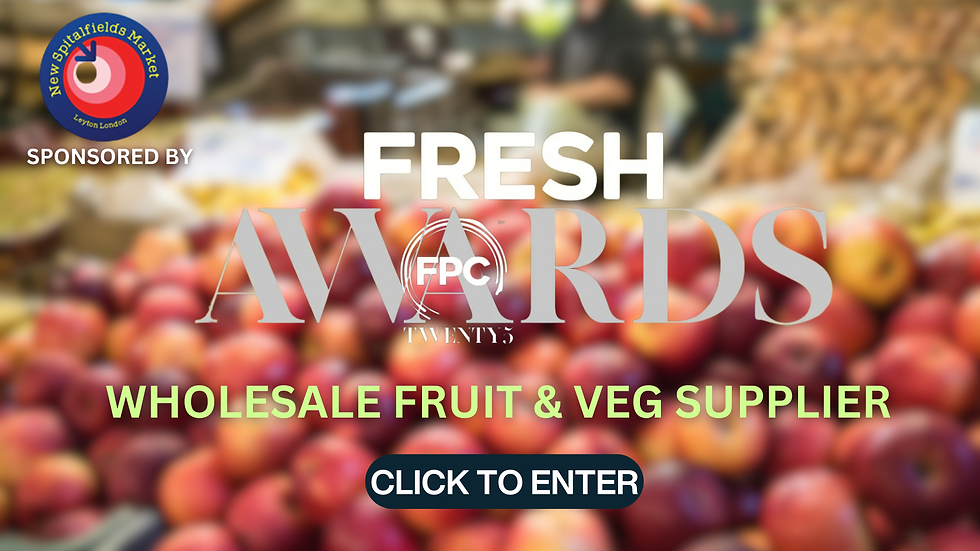Revolutionising Strawberry Farming: How Recycled Coir is Changing the Game
- Sarah-Jayne Gratton

- Mar 10
- 4 min read
Over the past few decades, UK strawberry and raspberry production has undergone a major transformation, shifting from traditional soil-based growing to soilless media.

With the phasing out of peat, coconut fibre (coir) has become the substrate of choice for growers, delivering consistently higher yields compared to field soils. However, with rising costs, sustainability concerns, and logistical challenges surrounding coir, the industry is now exploring innovative ways to extend its lifespan.
The Challenge: Cost and Sustainability Pressures
Despite its benefits, coir’s increasing demand, limited availability, and volatile shipping expenses have driven up costs for growers. Importing coir from Asia also presents a significant carbon footprint, while labour-intensive processes for replacing and disposing of used coir add further expense.
Given these pressures, the industry is now under mounting scrutiny to find ways to reuse coir efficiently. Until now, growers have hesitated to extend coir’s life beyond a few cropping seasons due to concerns over pest, disease, and weed build-up, which can impact fruit yield and quality. But with new research and technological advancements, this long-held belief is beginning to change.
Investigating Coir Reuse: NIAB and Overland Ltd’s Breakthrough
NIAB, in collaboration with Overland Ltd, has been exploring the potential for reusing strawberry coir substrate. Initial trials under the EU-funded Interreg project, Horti-blue C, tested direct replanting in used coir bags. June-bearing strawberry varieties showed promising tolerance, maintaining yield levels when replanted into pathogen-free coir. However, everbearing varieties did not fare as well, experiencing a gradual 6-7% yield decline each year. Researchers attributed this decline to a reduction in air-filled porosity (AFP) and alterations in the chemical and microbial properties of ageing coir.
Recognising the need for a more effective solution, Overland Ltd developed an automated system for recycling coir. Their innovative process involves the automated, low-labour removal of plastic grow bags from tunnels, followed by meticulous extraction of plant debris, roots, and crowns, leaving behind clean coir. This recycled coir then undergoes treatment before being reintroduced to growers.
What the Research Shows: Key Findings
To assess how growing and recycling cycles impact coir properties, NIAB conducted further studies funded by Overland Ltd. Results indicated that recycled coir exhibited increased water-holding capacity but lower AFP compared to virgin coir. Additional changes were observed in pH levels, electrical conductivity, and nutrient composition, with variations depending on the original coir manufacturer.
One notable finding was an increased prevalence of crown rot (Phytophthora cactorum) in directly reused and composted coir, though this issue was absent in fully recycled coir produced by Overland Ltd. This suggests that proper recycling methods can mitigate key disease risks, making recycled coir a more viable long-term solution.
Commercial Trials: Real-World Success
With additional funding from Growing Kent & Medway, NIAB and Overland Ltd accelerated their research, bringing recycled coir into commercial strawberry production. The project aimed to develop energy-efficient decontamination processes, demonstrate commercial-scale feasibility, and compare lifecycle analyses of virgin and recycled coir.
Trials were conducted at Kelsey Farms, where the everbearing variety Katrina was planted in three different coir types: virgin Legro coir, Overland’s recycled coir, and directly reused coir (planted into used grow bags). Each type was trialled in nine commercial tunnels, with independent irrigation systems. Unfortunately, a data mix-up meant that virgin and reused coir yields were recorded together, making direct comparisons difficult. However, results showed that plants in recycled coir cropped 7-10 days earlier than those in virgin coir, with yields remaining consistent at approximately 1.3 kg per plant. Additionally, plants grown in recycled media required 12% less fertigation over the season—a crucial advantage, particularly on hot days.
The trial was repeated in 2024, with an expanded focus on comparing recycled coir with a 50/50 mix of virgin and recycled material. Early indications suggest that these blends could offer growers greater flexibility while maintaining strong yields.
At NIAB’s East Malling site, further trials assessed the performance of the everbearing variety Malling™ Supreme in troughs filled with both virgin and recycled Legro and Cocogreen coir. Although total yields were slightly lower in recycled Legro coir, the discrepancy was attributed to differences in water-holding capacities. Over-irrigation in the high-capacity recycled Legro coir and under-irrigation in the lower-capacity recycled Cocogreen coir underscored the importance of adjusting irrigation strategies when using recycled media.
The Path Forward: A Sustainable Future
NIAB’s research has shown that properly recycled coir holds significantly greater potential than simple reuse or composting. When managed correctly, recycled coir can deliver yields and fruit quality comparable to virgin coir while reducing environmental impact and water consumption. However, differences in physical and chemical properties between coir manufacturers and growing histories highlight the need for tailored irrigation and fertigation regimes.
Moving forward, research will focus on optimising the recycling process to better preserve coir’s structure, mitigate residual chemical imbalances, and eliminate any lingering pest or pathogen risks. Scientists are also investigating the root microbiome of strawberries grown in both virgin and recycled coir to identify any microbial imbalances.
An economic and environmental impact assessment is also underway to quantify the financial and ecological benefits of recycled coir compared to virgin coir. By factoring in the full lifecycle of coir—from production and recycling to on-farm use and disposal—this research aims to provide growers with the data needed to make informed, sustainable choices.
With promising results already emerging, the future of sustainable strawberry production looks bright. If the industry embraces coir recycling at scale, it could significantly reduce costs, improve environmental performance, and ensure long-term viability for UK berry growers.










Comments